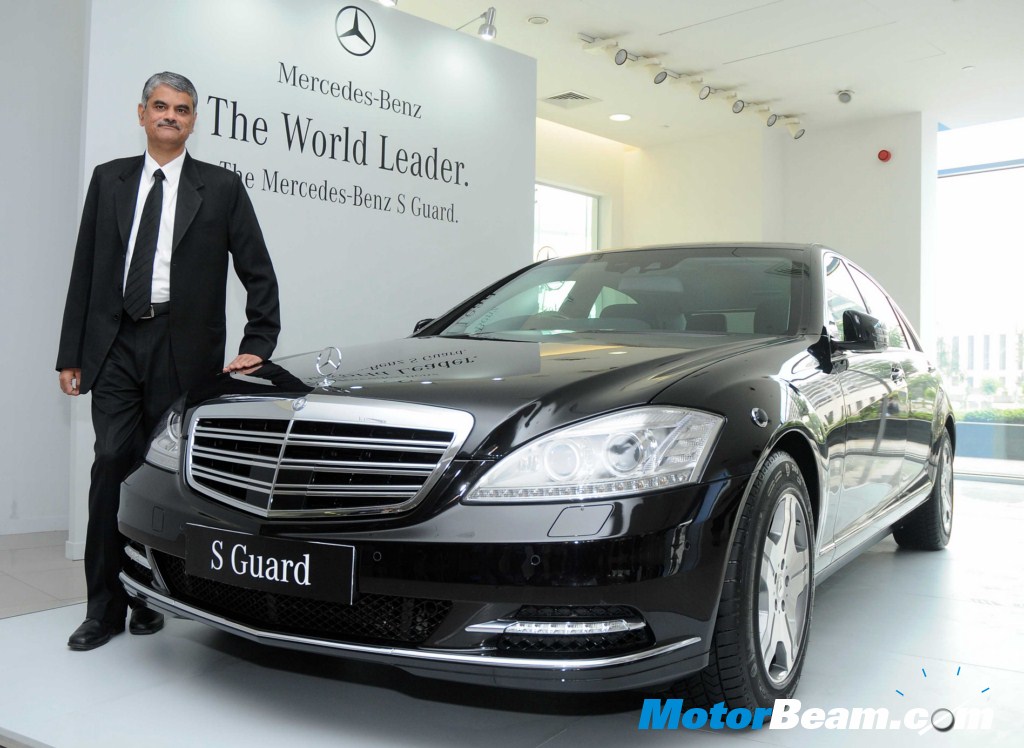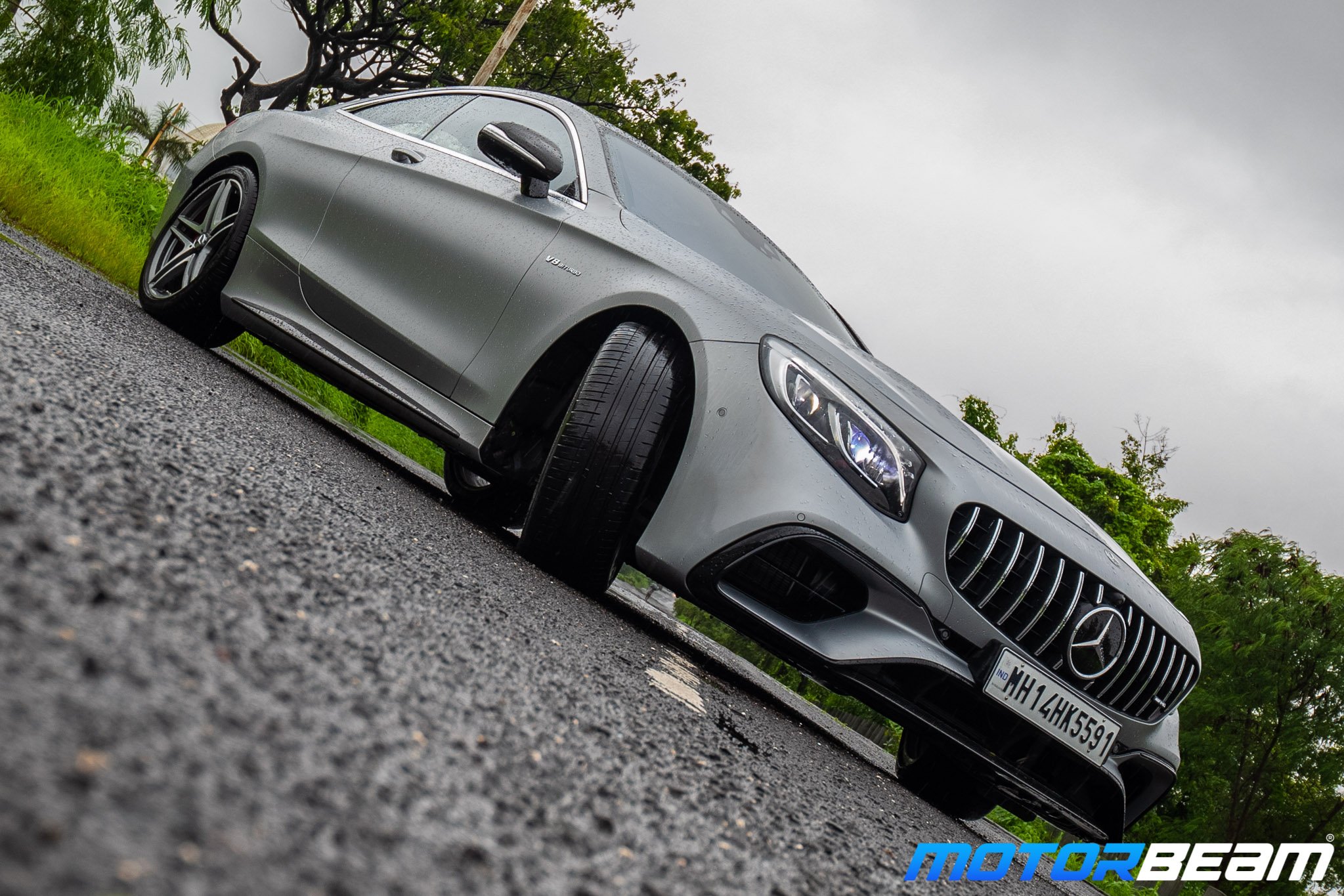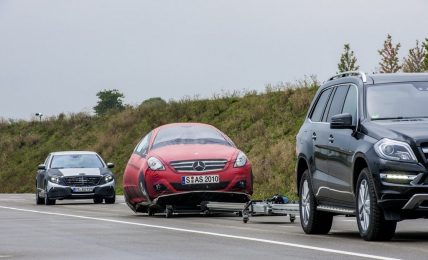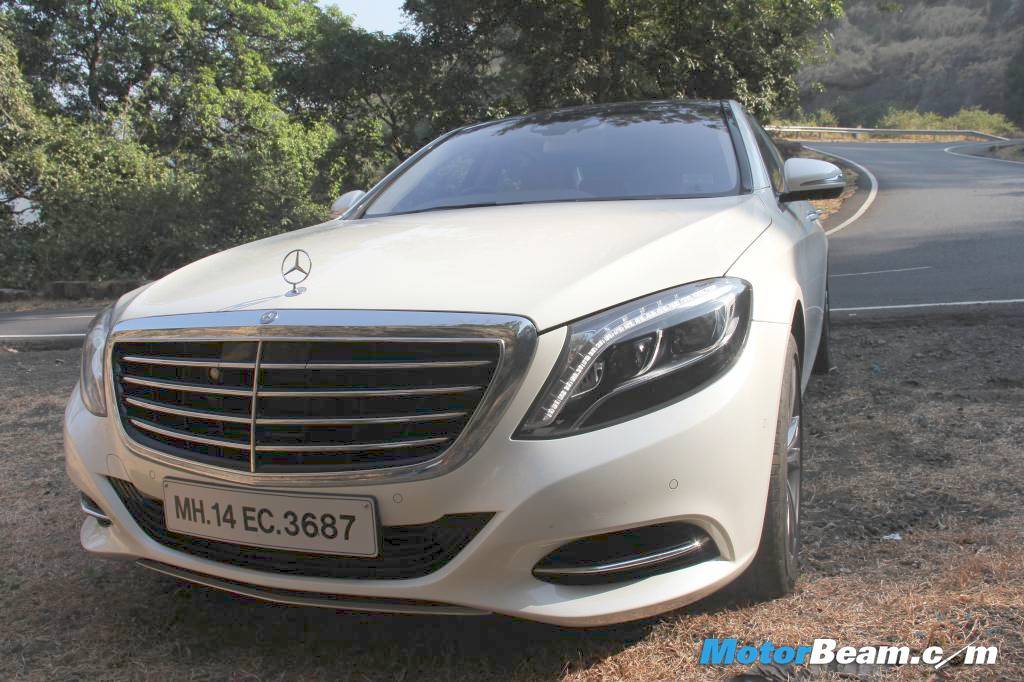Mercedes-Benz India today presented a new luxury limousine for use by government leaders, captains of industry and royalty, the S-Guard with integrated Protection. The S-Guard follows a long and unique tradition of large, armoured, prestige limousines from Mercedes-Benz and encompasses cumulative experience of 80+ years of manufacturing vehicles with factory-integrated special protection. The S-Guard is expected to cost close to Rs. 6 crore (safety doesn’t come cheap).
Developed as a new vehicle on the basis of the S 600, the S-Guard stands at the top of the Mercedes-Benz Guard range of special protection vehicles. It is powered by a 12-cylinder bi-turbo engine with a displacement of 5513cc and an output of 517 hp with an impressive 830 Nm of torque. The suspension and basic vehicle structure have been modified to guarantee the long-term overall stability of the vehicle. The modifications also provide a solid foundation for the integration of the heavy special-protection elements.
The new Mercedes-Benz S-Guard offers its passengers extremely effective protection from external situations. Its Highest Protection status means that it has been engineered to resistance level B6/B7, as tested and certified by international organisations. Its armour resists military-standard small-arms projectiles and provides protection against fragments from hand grenades and other explosive charges. Additional safety features include run-flat tyres, a self-sealing fuel tank and a fire-extinguishing system.
The S-Class offers front airbags which deploy in one or two stages, depending on the situation, sidebags, specially developed windowbags for the longer rear compartment, belt tensioners and NECK-PRO luxury head restraints. Mercedes-Benz’ night view assist system reduces the risk of accidents during the hours of darkness. This system is based on infrared light, which is invisible to the human eye and will therefore not dazzle oncoming traffic. Two infrared head-lamps illuminate the road, significantly extending the driver’s range of vision when on low beam. An infrared camera mounted on the inside of the windscreen picks up the reflected image of the road ahead and displays this in the instrument cluster.





